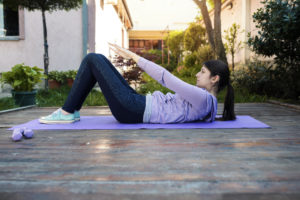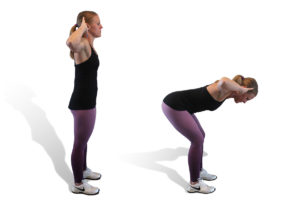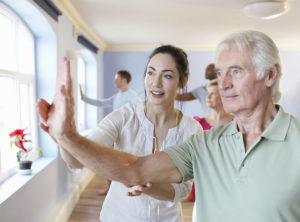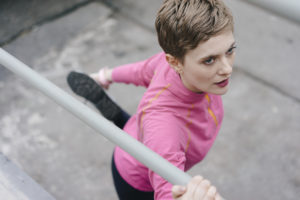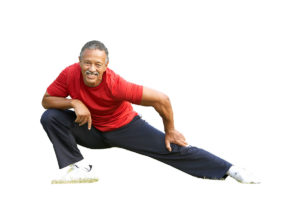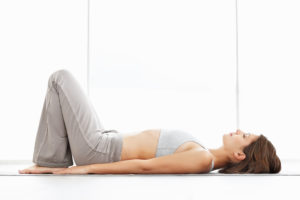FunctionalGeneral
Walking Benefits Low Back Pain
Consistent walking program reduced the need for back pain care by half in new study. Consider adding a walking program into the routine of clients coping with low back pain…
Headlines
We’ve curated all the fitness headlines just for you! Want the latest news? Check out Headlines for the newest info.
Hiking: It’s For Everyone!
Telling a person to “take a hike,” used to be a bit of an insult, but sending someone on a trek is really more of a favor. Besides having physical benefits, hiking improves mental health by fostering a relationship with nature. Research shows that spending time among trees and the great outdoors reduces blood pressure, lowers cortisol and adrenaline levels, and amps up the immune system (Mitten 2016).
Parkinson’s Disease and Exercise
Is there a positive relationship between Parkinson’s disease and exercise? Yes! And personal trainers can make a real difference.
Sample Exercises: Deadlifts and Deadshifts
Look for ways to add these sample deadlifts and deadshifts to your training programs. Your body, your clients and your baby will thank you.
Training Clients with Hearing Loss
Effectively training clients requires us to listen to their needs, but equally important is the knowledge that they can hear you clearly. And then consider those whose hearing loss may make them feel excluded from the fitness world.
Moving More Every Day
As you help your clients understand the benefits of moving more, it’s important to remind them that all movement doesn’t need to be done in the gym.
10 Ways to Help Families Change
Families need you! A growing body of research makes it clear: Families provide a powerful force in supporting—or opposing—better health behaviors. Indeed, the authors of a state-of-the-art review in a…
Fall Prevention for Older Adults
Fall prevention is a vital part of functional training for your aging clients. Changes in communication between the nervous and muscular systems as age we are likely to result in a loss of balance, which is a risk factor in the older population. Kyle Stull, DHSc, a content development manager at NASM and an instructor for the Department of Health and Human Performance at Concordia University, offers some practical advice in training clients for fall prevention.
The Top 10 Corrective Exercises
How does corrective exercise programming fit into your business? Clients who are self-motivated to work hard are already star pupils. But what do you do when a client, because of injury, overuse patterns or some other type of dysfunction, can’t quite make it out of the gate? Many people want and need help with reducing pain in addition to meeting functional fitness goals. One goal dovetails into the other.
Stretches After Sitting All Day
Encourage your fitness class participants to use these simple stretches after sitting all day to help their muscles return to a relaxed state.
Personalized Tai Chi
Are customized routines really better than a standard protocol? One recent study posed this question in reference to tai chi: Is it better to offer a standard tai chi sequence or to individualize moves to a person’s needs?
Skill-Based Exercise for Cognitive Health
These days, we hear a lot about the cognitive benefits of exercise. A recent research review examined 72 studies (including literature reviews and meta-analytic reviews) to clarify the relationship between exercise and cognition.
A Strong Diaphragm for a Strong Core
When you think about exercising core muscles, do you remember your diaphragm? Its two main functions involve breathing and biomechanics, and it’s one of the most important muscles for maintaining intra-abdominal pressure (Nelson 2012). Intra-abdominal pressure is like a weight belt applied from the inside. If your body can’t regulate this pressure, you may experience poor motor control and lack of spinal stability. Plus, when the diaphragm is not properly engaged, other muscles must compensate, increasing your risk of injury.
Exercise as Medicine in Cancer Care
Serving cancer survivors is another area in which exercise is being acknowledged as an important part of the healthcare continuum. New guidelines, developed by an international group of experts, advise people living with cancer to avoid inactivity.
Fall Prevention Strategies
Fall prevention is one of the top goals for our active-aging clients.
Historically, the training approach to help clients was a functional “train-to-transfer” mentality, but strategies for balance improvement and fall prevention have come a long way. Thanks to a combination of scientific research and success stories of fitness pros working with this population, we know more now than ever.
Introducing the GYROTONIC® Method to Pilates Instructors
As movement teachers, we’re eager to learn more about how to live comfortably in our bodies. How can we transfer this ability to our clients and students?
Diaphragmatic Breathing & Neck Pain
Everyone from elite athletes to average clients can benefit from learning more about breathing or reprogramming the way they breathe. More specifically, by teaching them techniques that emphasize diaphragmatic breathing, you will help them meet their exercise goals.
The Feldenkrais Method®
Are you recovering from an injury or suffering from chronic pain? The Feldenkrais Method of somatic education may help. It offers a holistic approach to human development and motor function improvement through the medium of movement and sensation. The effectiveness of the method lies in its ability to work with the whole person. It is also useful for elite athletes and expressive artists. Buffy Owens, GCFP, a Guild Certified Feldenkrais PractitionerCM with experience as a personal trainer, yoga instructor, birthing assistant and life coach, explains how the method works.
Balance Training for Seniors
One of the most challenging issues that affect older adults is instability and loss of balance. Improving balance is vital for improving the quality of this population’s workouts. Recognizing and enhancing the various components of balance provides the greatest chance for success.





